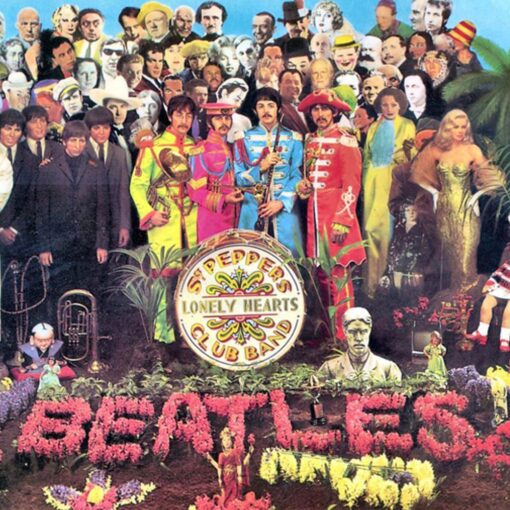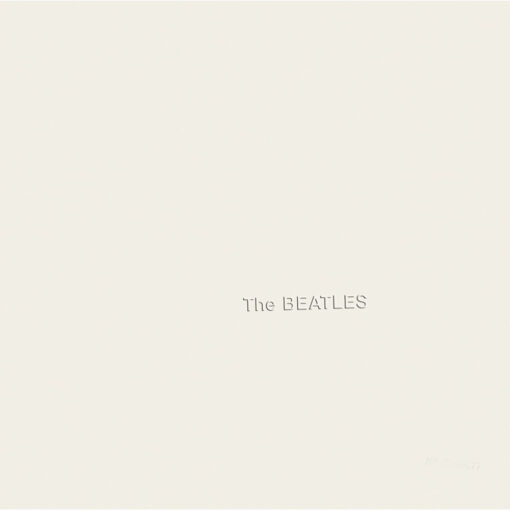- Published in 1967
- Author: Lennon/McCartney
- Track 6 on “Magical Mystery Tour“
- Track 8 on “The Beatles 1967-1970” (Blue Album)
PAUL 1967: “Everyone keeps preaching that the best way is to be ‘open’ when writing for teenagers. Then when we do we get criticized. Surely the word ‘knickers’ can’t offend anyone. Shakespeare wrote words alot more naughtier than knickers!”
JOHN 1967: “We chose the word (knickers) because it is a lovely expressive word. It rolls off the tongue. It could ‘mean’ anything.”
GEORGE 1967: “People don’t understand. In John’s song, ‘I Am The Walrus’ he says: ‘I am he as you are he as you are me.’ People look for all sorts of hidden meanings. It’s serious, but it’s also not serious. It’s true, but it’s also a joke.”
JOHN 1968: “We write lyrics, and I write lyrics that you don’t realize what they mean till after. Especially some of the better songs or some of the more flowing ones, like ‘Walrus.’ The whole first verse was written without any knowledge. With ‘I Am the Walrus,’ I had ‘I am he as you are he as we are all together.’ I had just these two lines on the typewriter, and then about two weeks later I ran through and wrote another two lines and then, when I saw something, after about four lines, I just knocked the rest of it off. Then I had the whole verse or verse and a half and then sang it. I had this idea of doing a song that was a police siren, but it didn’t work in the end (sings like a siren) ‘I-am-he-as-you-are-he-as…’ You couldn’t really sing the police siren.”
JOHN 1980: “The first line was written on one acid trip one weekend. The second line was written on the next acid trip the next weekend, and it was filled in after I met Yoko. Part of it was putting down Hare Krishna. All these people were going on about Hare Krishna, Allen Ginsberg in particular. The reference to ‘Element’ry penguin’ is the elementary, naive attitude of going around chanting, ‘Hare Krishna,’ or putting all your faith in any one idol. I was writing obscurely, a la Dylan, in those days. It’s from ‘The Walrus and the Carpenter.’ ‘Alice in Wonderland.’ To me, it was a beautiful poem. It never dawned on me that Lewis Carroll was commenting on the capitalist and social system. I never went into that bit about what he really meant, like people are doing with the Beatles’ work. Later, I went back and looked at it and realized that the walrus was the bad guy in the story and the carpenter was the good guy. I thought, Oh, shit, I picked the wrong guy. I should have said, ‘I am the carpenter.’ But that wouldn’t have been the same, would it? (singing) ‘I am the carpenter…’”
About “I Am the Walrus”
Written by John Lennon and credited to Lennon–McCartney, “I Am the Walrus” was released as the B-side to the single “Hello, Goodbye” and on the Magical Mystery Tour EP and album. This song is featured in the film during a segment where the band mimes to the recording.
John Lennon wrote the song to confound listeners who had been considering serious scholarly interpretations of the Beatles’ lyrics. He was partly influenced by two LSD trips and Lewis Carroll’s poem “The Walrus and the Carpenter” from 1871. The producer George Martin arranged and added orchestral accompaniment with violins, cellos, horns, and clarinets. Various nonsense lines and loud whoops were also sung by the Mike Sammes Singers, a 16-voice choir of professional studio vocalists.
Having reached number one and number two simultaneously on the British singles chart with “Hello, Goodbye” and the Magical Mystery Tour EP in December, “I Am the Walrus” holds the distinction of reaching those positions simultaneously. BBC banned the song shortly after its release because it contained the line “Boy, you’ve been a naughty girl, you let your knickers down”.
“I Am the Walrus” was probably inspired by Procol Harum’s “A Whiter Shade of Pale”, a hit song during the summer of 1967 and Lennon’s favorite at the time. Lennon had been working on three song ideas, one of which was inspired by a police siren at his home in Weybridge; he wrote “Mister cit-y police-man” to the rhythm and melody of the siren. Second, a short rhyme about Lennon sitting in his garden, and third, a nonsense phrase about sitting on a corn flake. The three songs couldn’t be finished separately, so he combined them into one. Also included in the lyric was the phrase “Lucy in the sky”, referring to an earlier Beatles song “Lucy in the Sky with Diamonds“.
Meaning of “I Am the Walrus”
The lyrics of “I Am the Walrus” are famously surreal and abstract, filled with vivid and often nonsensical imagery. The song is thought to have been influenced by Lennon’s interest in wordplay and his desire to confound and challenge listeners’ attempts to find concrete meaning in his lyrics.
Lennon once mentioned that the inspiration for the song came from hearing about a teacher who had instructed his students to analyze Beatles songs in class. He decided to write a song that would be deliberately difficult to decipher, to showcase the absurdity of trying to find deep meaning in pop lyrics.
The title, “I Am the Walrus,” itself has been subject to much speculation. However, Lennon later stated that he chose the term “walrus” because he liked the sound of it.
“I Am the Walrus” is a prime example of Lennon’s more experimental and avant-garde songwriting, and it remains a beloved and iconic track in The Beatles’ catalog. It’s a song that invites interpretation but resists any definitive explanation.
Personnel
The Beatles
- John Lennon – lead vocals, electric piano and Mellotron
- Paul McCartney – bass guitar, tambourine
- George Harrison – electric guitar
- Ringo Starr – drums
- Orchestrated, directed and produced by George Martin
Session musicians and singers
- Session musicians – strings, brass, and woodwinds
- Mike Sammes singers – backing vocals
- Ray Thomas – backing vocals
- Mike Pinder – backing vocals
- Engineered by Geoff Emerick and Ken Scott


